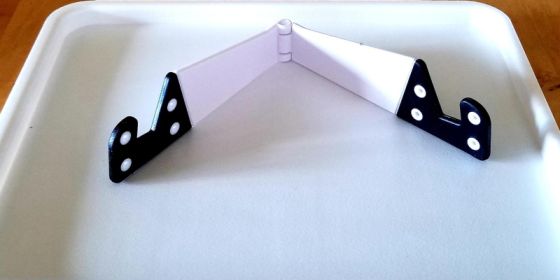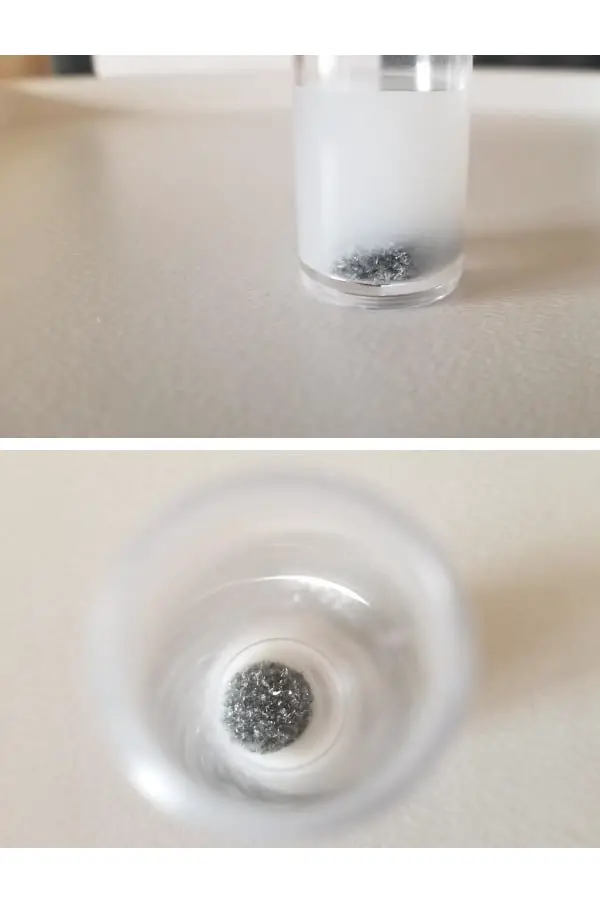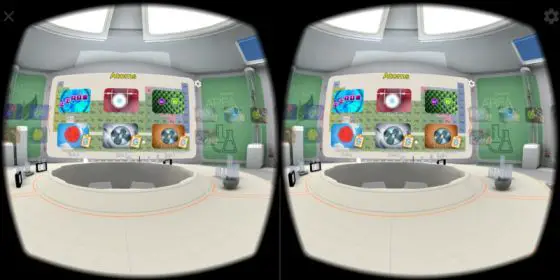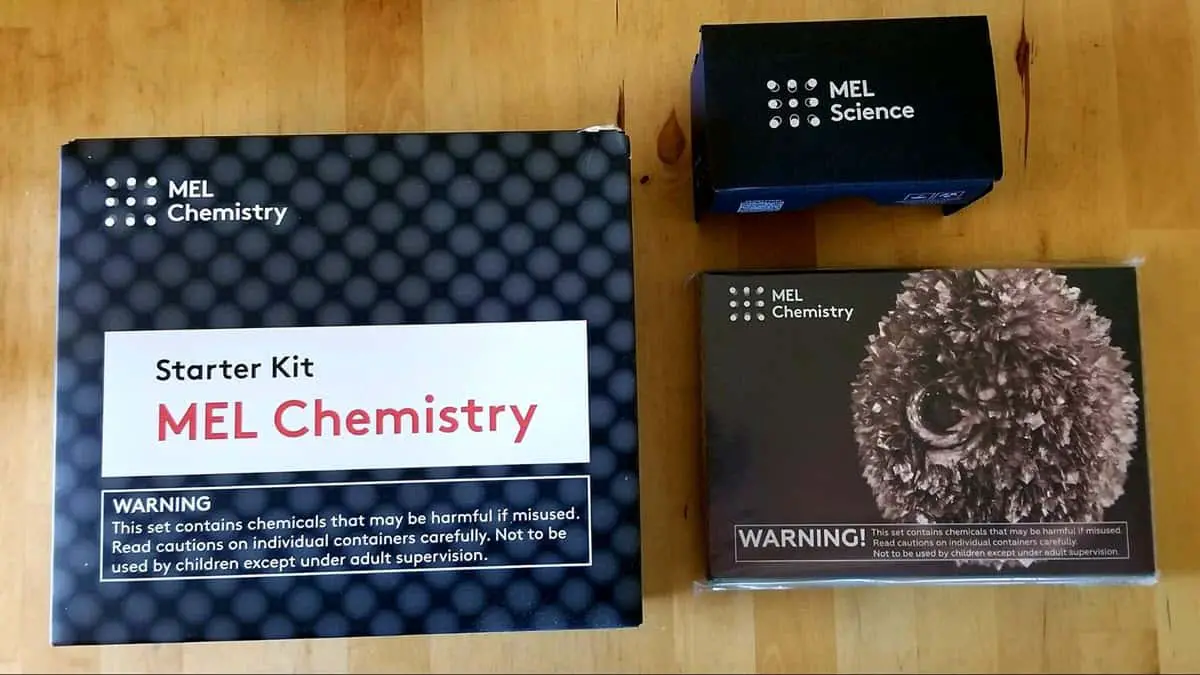MEL Chemistry Review: Is Your Child the Next Bill Nye?
As a kid, I was always fascinated with science. But “back then”, most kids had little to no access to experiments or inspirational concepts unless it was from school, a science TV show (thanks Bill Nye!), or a field trip to the planetarium. Fast forward more years than I’m going to admit, kids really don’t know how amazing they have it.
Why? Because nowadays, we have amazing at-your-door science kits that offer science experiments every month. But with as many mail order kits available as there are guppies in a pet shop aquarium, none have made me or my kids feel more like a scientist than the MEL Science Chemistry sets. With a Starter Kit that supplies practically everything you need, including beakers, goggles, micro-lens, and more, the only thing you’ll be missing is a laboratory and a Ph.D.
If you have a budding scientist at home or a science teacher looking for cool classroom extensions, we highly recommend satisfying your scientific desires with MEL Science. The great thing about these sets is that it’s for anyone; kids and adults, including folks who don’t intend to be scientists, but just have a profound curiosity about the universe.
>> Click here to grab your MEL Science Starter kit. <<
Related post: Best STEM Subscription Boxes for Kids
MEL Chemistry Review
How it Works
When you subscribe to MEL Chemistry, you can expect to receive 24 chemistry sets that contain 2-3 experiments in each box. A new set is sent each month, that way you’ll have a few weeks to try out each experiment within the set before your next one arrives. There are different subscription plans, and the one you choose will impact how many sets you receive.
Most of the experiments will have everything you need provided for you in the box. Every once in a while, you will need additional, very common household items like batteries or milk. MEL thinks well ahead and will supply you with a list of necessary items (mostly all already included) in their shipment email to you, which they send around 5-10 days before it arrives.
What’s in the Box?
The first shipment has three boxes, but afterward, you can expect to have one experiment box per month. In the initial shipment, you’ll receive:
- A large box with a starter kit containing the chemistry equipment.
- A medium-sized box with two-three experiments.
- A small box that, to my daughter’s dramatic excitement, is a virtual reality headset.
The boxes were pretty standard to open. Everything was tucked neatly and safely inside of the starter kit, so they put effort into the functionality of safe packaging for fragile items. We’ll be keeping this box to store the chemistry equipment after each use.
Key Features
There are lots of key features for the MEL Chemistry sets. It’s like a gift that keeps on giving since, with a subscription, you’ll continuously receive new experiments. One cool feature is that they will supply a little extra of the experiment so you can do the activity a couple of times instead of just once.
At the time of publication, the cost of the subscription in the US is $34.90 per month. The value-for-money of this first package is fantastic! It includes a jam-packed starter kit and VR headset for free, plus the first two experiment boxes. Considering that you can pause or cancel the subscription at any time, grabbing the starter kit is, in our opinion, one of the best value STEM purchases you can make for your kids!
>> Click here to grab your MEL Science Starter kit. <<
Starter Kit

Glass Beaker and Flask
These are made of borosilicate glass, which is notorious for withstanding excessive heat from an open flame or stove. They are of the same quality used in a school chemistry lab and they conduct heat beautifully. These will be necessary to use when you have experiments that require you to heat the reagents (a substance used for chemical reactions). The first chemistry experiment set did not require this.

Rubber Stoppers
The three blue rubber stoppers are for the flask. Each one has its own purpose, as will be described in the instructions for the experiment it’s intended for.
Pouring Beaker
This beaker is durable, semi-clear plastic used for pouring liquids and other materials in the kits.

Safety Glasses and Tray
Two safety eye protectors are provided, and MEL advises to use them for every experiment throughout the whole process. Since some of the chemicals, reagents, and reactions can be extremely dangerous, safety is one of their highest priorities. They are small enough to fit kids but are quite snug on an adult.
The small, white tray is handy to have so that it can protect your table from spills and stains. The Montessorian in me also loves trays because it helps for organization and to contain the materials in one area.

Macro Lens
The macro lens included in the Starter Kit turns your smartphone or tablet into a microscope. With its high magnification, you can safely attach the lens to the camera and take awesome microscopic photos of your experiments and see the reactions take place in real-time. How cool is that? A microscope in your pocket!

I used it for the tin experiments and it worked pretty well, but I had to fidget with it to get it in the right spot on my Android phone. It’s a little more blurry than one I anticipated, but we were able to see the tiny tin hedgehog crystals and the tin dendrite trees more up close and personal.
Fuel Stove/Burner
This little stove is convenient and foldable. It’s used for experiments that require an open flame and is relatively safe. It’s a little tricky to open it at first and the edges are a little sharp.

With that in mind, it might be best for the adult to assemble it. It comes with two accessories that would be used for safety and heat.

Smartphone/Tablet Stand
The stand looks just as edgy and “science-y” as the rest of the materials and is decked out in stormtrooper colors. It can fit a tablet or a smartphone. You can use it while you utilize the app features while conducting the experiment. It’s also handy to angle for taking videos and pictures.

Funnels
One semi-clear, plastic funnel is included that fits neatly into the flask and beaker. A much smaller, black plastic funnel is also included for more precise and smaller measurements. Using funnels is essential to limit spills and to vary the speed of your pouring, which can sometimes affect the chemical reaction.

Small Plastic Cups
A stack of small, plastic cups are provided. They are reusable, but can also be tossed if they become overused or were used with a non-washable toxic chemical. The disposal section in the app will tell you whether or not and how they need to be thrown away.

The MEL Chemistry App
One of the neat features of MEL Science experiments is how in-depth you will be able to go with the free app. Each experiment has a video with instructions and detailed explanations. It also includes some further assignments for those who want to dive in more.
The app is free and it includes videos and everything else you need to know for disposal, the science behind the project, and so much more. It even has a step by step guide for each of the experiments, which you can use in conjunction with the instructions card and paper manual. They seem to have put a lot of thought into each type of learner.

Chemistry Experiment Set
The experiment set you’ll receive for your first month is about growing very intricate crystals with tin. The two experiments that are included are:
- Tin dendrite
- Tin hedgehog

I was never much of a ‘physical science meets chemistry’ person, but these were simple experiments with very clear instructions. The concept behind the experiments is definitely for older kids who are in the process of learning the material in school.

My 10-year-old didn’t understand the concept of electrodes, ions, and other similar terms. She took immense joy in watching and participating in the experiments, which is great for exposure.
Tin Dendrite
This experiment shows you how to set up a small electrical current, and allows the experimenter to mix chemicals. From my experience as a science teacher, this is really the most exciting part for students: mixing and connecting.

The tin “tree” from one crocodile clip to the other took about 15 minutes total. But, within a few seconds of connecting the black clip to the petri dish, we started seeing the tin grow.


There are three more packs of reagents in the box, so you can do this experiment two or three times. The app provides two more tin dendrite experiments, which show you ways to make the tin grow quicker and more lustrous.
Tin Hedgehog
This experiment also mixes the same chemicals but is prepared differently. It uses zing pellets to grow very small hedgehog.

My initial thought was the hedgehog would be bigger, but seeing how small the vial and zinc pellets are, I realized it would be very small. After mixing the chemicals and pouring half into the glass vial, it took about 15-20 minutes for the pellet to turn into a small, spiky ball. The reagent was very cloudy, so it was a little hard to see.

We tried it two more times but followed the app’s suggestion of diluting the reagent with different amounts of water. The tin protrusions were much longer and shinier than with no dilution at all. We also used the micro lens, which allowed us to see it more closely.

Virtual Reality Headset
The VR Headset is a very exciting piece in the MEL Chemistry set. Inspired by Google Cardboard, the headset has its own app used in conjunction with MEL Chemistry. It has lots of VR lessons that are geared towards a standard chemistry curriculum in schools. There are 33 lessons so far, including an interactive periodic table of elements and super cool atoms in action.

One of the coolest aspects of the VR Headset is that you don’t have to use it just with the MEL Chemistry app. We downloaded the Google Cardboard app as well, and took turns taking trips into the jungle, under the sea, and anywhere else the app allows us to go.
I will admit that it took me a while to figure out how to select items while I used the headset. After a little research, I found that the fancy silver “button” in the top right corner is actually a magnet. The magnet invisibly connects to the phone’s virtual reality controls (the science behind that is pretty fascinating in itself). So, gently pressing the silver button allows you to select what you need. In an actual Google Cardboard VR headset, it’s a silver ring that you gently pull down.
Is this MEL Science Subscription Box Worth It?
Overall, the MEL Chemistry set is well worth a subscription. The materials are of very high quality and the instructions are clear. They put a lot of effort into safety and for the educational outcome of the experiments. The experiments had little set up time, and were short and sweet.
If I was still a science teacher, I would use MEL Chemistry as part of my lessons for an added visual and short, hands-on activity. Having said that, you definitely don’t need to be a teacher for you and your kids to make great use of these sets.
There is no doubt that “kids these days” have it made with experiments and learning about real, manipulative science. When I was putting together the tin dendrite experiment, I realized that if I had something like this when I was young, it would have helped boost excitement for the types of science I wasn’t interested in.

If you have younger kids, I highly suggest the MEL Kids experiments as they will be more relevant to their age. My 10 year old thought the tin experiments were “cool” but lost interest in the explanations because the jargon was too complicated for her age. I give major kudos to MEL Science for including the VR Headset as it helped with giving her visual descriptions of the concepts.
[review]Frequently Asked Questions
What is the appropriate age group for these chemistry sets?
MEL Science advertises their chemistry sets for ages 10-14, but it’s also suitable for older kids interested in basic and creative chemistry. Kids younger than 10 may also find it fascinating, but the explanations will likely be over their heads. MEL Science also has a STEM subscription available for kids ages 5-10.
How often can I repeat the experiments?
MEL Science provides enough reagents to try the experiment two or three times. The shelf life for the experiments is for at least a year, depending on the reagent and how it is stored.
How much is the subscription?
Each set is $34.90 per month, and you are billed a few days before you receive the shipment. Your starter chemistry kit, VR headset, VR lessons on the app, and shipping are all free! Plus, you can cancel or pause your subscription at any time. You will have the choice between a 9 or 12-month subscription for the MEL Chemistry, and a 4-month subscription for the MEL Kids.

Is shipping included in the price?
Shipping is free in the US and UK. In other countries, eg. Canada and Australia, it is quite reasonable.
Can I buy just one experiment kit?
At this point, MEL Science doesn’t offer individual sales, but they hope to in the future.
What happens if I run out of reagents for an experiment?
As mentioned above, there is enough to do the experiment at least two times. Because of the nature of the boxed sets, they can only send a whole experiment kit instead of just the individual reagent.
I’m a teacher and my school is interested in a school subscription. Is this offered?
Yes! MEL Science encourages and offers school subscriptions. It’s best if you reach out to them at their schools page.
How will I know which chemistry set I will be getting?
They will let you know via email a few days before your shipment. You can also take a look at their chemistry experiment list to see what you will expect.








